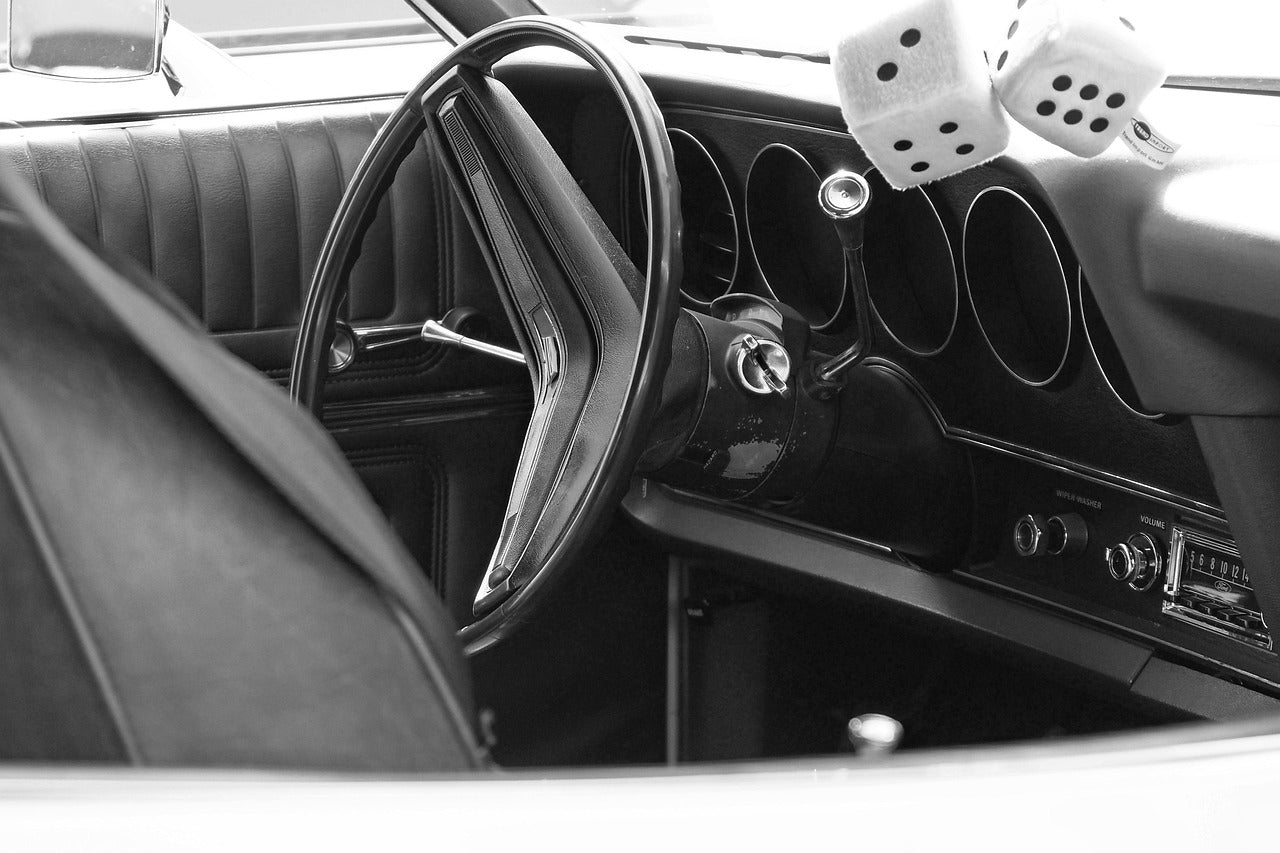Leather car interiors exude sophistication and comfort, elevating the overall appeal of a vehicle. However, maintaining their pristine condition requires proper care, particularly when faced with stubborn grease and oil stains. Whether from food spills, mechanical work, or accidental contact, these stains can be unsightly and, if left untreated, may cause long-term damage to leather surfaces.
Prompt and appropriate cleaning is essential to preserving the luxurious look and durability of leather car interiors. In this guide, we will explore effective methods for removing grease and oil stains while maintaining the integrity of the leather.
Pre-Cleaning Steps
Before applying any cleaning solutions, assessing the stain type and condition is crucial. Fresh stains require different techniques compared to older, set-in stains. Proper preparation ensures optimal results and prevents additional damage to the leather.
Gathering Necessary Supplies
For an effective cleaning process, the following supplies are recommended:
-
Leather Cleaner: A pH-balanced cleaner specifically formulated for automotive leather.
-
Microfiber Cloths: Soft, non-abrasive cloths to wipe surfaces without causing scratches.
-
Soft-Bristled Brush: Ideal for gently scrubbing stubborn stains without harming the leather.
-
Leather Conditioner: Restores moisture and prevents drying or cracking after cleaning.
-
Absorbent Materials: Cornstarch or talcum powder helps soak up excess grease.
-
Protective Gear: Gloves and eyewear for safe handling of cleaning agents.
By ensuring all necessary materials are readily available, the cleaning process becomes smoother and more effective.
Step-by-Step Cleaning Process
1. Vacuum Cleaning
Begin by using a vacuum with a soft brush attachment to remove dust, debris, and loose dirt from the leather surface. This step prevents abrasive particles from embedding into the leather during the cleaning process.
2. Blotting the Stain
For fresh grease or oil spills:
-
Use a clean, dry microfiber cloth to blot the affected area gently.
-
Avoid rubbing, as it may spread the stain and push it deeper into the leather pores.
-
If the stain is still visible, proceed to the next step.
3. Applying a Cleaning Solution
Depending on the severity of the stain, you can choose from the following cleaning methods:
Commercial Leather Cleaner:
-
Apply a small amount of leather cleaner to a microfiber cloth.
-
Gently wipe the stained area in circular motions.
-
Follow the manufacturer’s instructions for the best results.
DIY Cleaning Solution:
For a homemade cleaning option:
-
Mix equal parts of white vinegar and distilled water.
-
Dampen a cloth with the solution and gently clean the stain.
-
Vinegar effectively breaks down grease and oil without harming the leather.
-
Always test any cleaning solution on a hidden area before applying it to visible sections.
4. Deep Cleaning Stubborn Stains
If the stain persists:
-
Sprinkle cornstarch or talcum powder on the affected area.
-
Let it sit for several hours or overnight to absorb the oil.
-
Brush off the powder gently and check if the stain has lifted.
-
For older stains, apply a small amount of mild dish soap with a damp cloth and wipe gently.
5. Conditioning After Cleaning
Leather can lose its natural oils after cleaning, leading to dryness. To restore its suppleness:
-
Apply a high-quality leather conditioner evenly over the cleaned area.
-
Use a clean microfiber cloth to work the conditioner into the leather in circular motions.
-
Let the conditioner absorb fully before using the seats.
Regular conditioning not only enhances the leather’s appearance but also provides a protective barrier against future stains.
Advanced Cleaning Tips and Considerations
-
Choose the Right Cleaner: Select a leather cleaner suited for your car's leather type.
-
Avoid Harsh Chemicals: Bleach, ammonia, and abrasive cleaners can damage leather.
-
Test Before Applying: Always spot-test any cleaning product on an inconspicuous area before full application.
-
Use Gentle Motions: Scrubbing aggressively may worsen the stain and damage the leather’s texture.
-
Act Quickly: The sooner you address a stain, the easier it is to remove.
Preventative Measures
To minimize the risk of grease and oil stains:
-
Regular Cleaning: Wipe down leather seats with a microfiber cloth weekly.
-
Use Protective Covers: Seat covers help shield the leather from potential stains and wear.
-
Be Cautious with Food and Lotions: Avoid eating greasy foods or handling oily substances inside the car.
-
Routine Conditioning: Apply a leather conditioner every few months to keep the material soft and stain-resistant.
Grease and oil stains on leather car interiors can be an inconvenience, but with the right approach, they can be effectively removed. Proper care ensures your leather remains clean, soft, and luxurious for years to come. Investing in high-quality leather care products is essential for maintaining the appearance and longevity of your car’s interior. For the best results, prefer using premium products from Pecard Leather Care, which specializes in superior leather cleaning and conditioning solutions.
FAQs
1. Can I use dish soap to clean grease stains from leather seats?
Dish soap can break down grease, but it is not recommended for leather as it may strip natural oils. Instead, opt for a leather-specific cleaner to maintain the material’s integrity.
2. How often should I condition my leather car seats?
Conditioning should be done every three to six months, depending on usage and environmental conditions. Regular conditioning helps prevent cracking and fading.
3. Are home remedies effective for removing oil stains from leather?
Yes, absorbents like cornstarch and talcum powder can help lift minor oil stains. For tougher stains, a combination of vinegar and water or a commercial leather cleaner may be needed.
4. What should I do if a grease stain persists after cleaning?
For stubborn stains, repeat the cleaning process with a specialized leather cleaner. If the stain remains, consider professional leather restoration services.
5. Is rubbing alcohol safe for leather stain removal?
Rubbing alcohol can remove stains but may dry out the leather. If used, apply a leather conditioner afterward to replenish moisture.
6. Where can I find high-quality products for cleaning and conditioning leather car interiors?
For premium leather care solutions, explore products from Pecard Leather Care. These products are specifically formulated to clean, protect, and enhance the durability of leather interiors.






